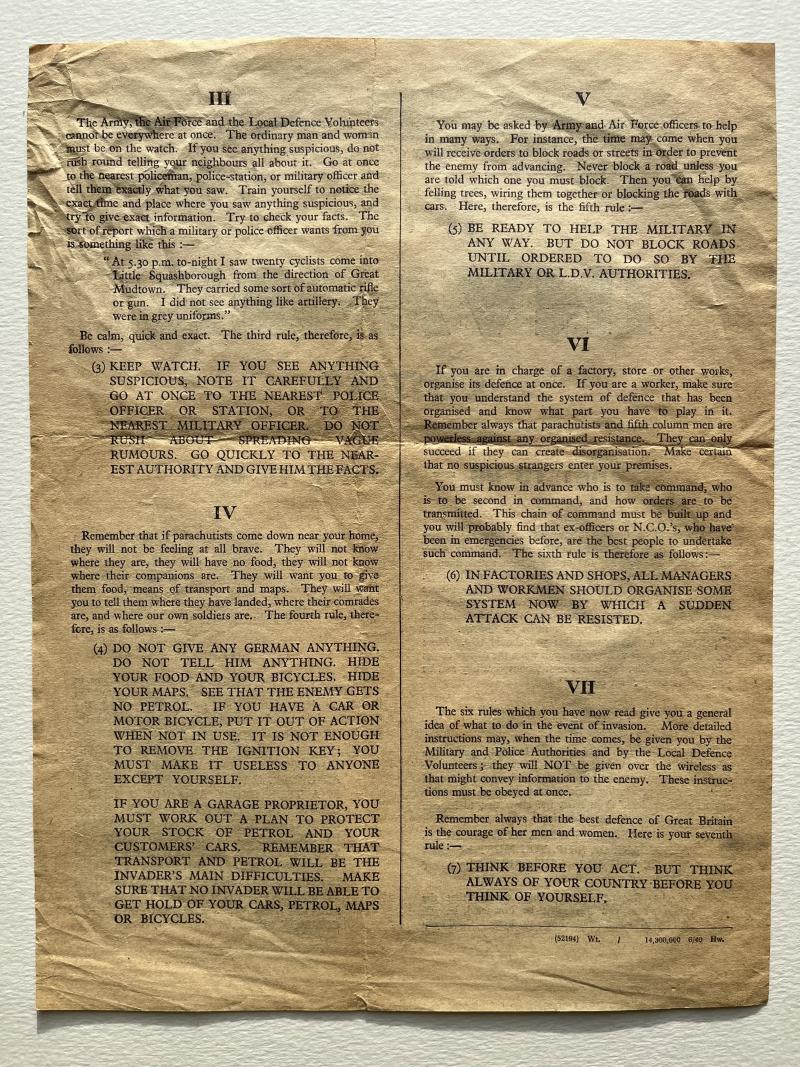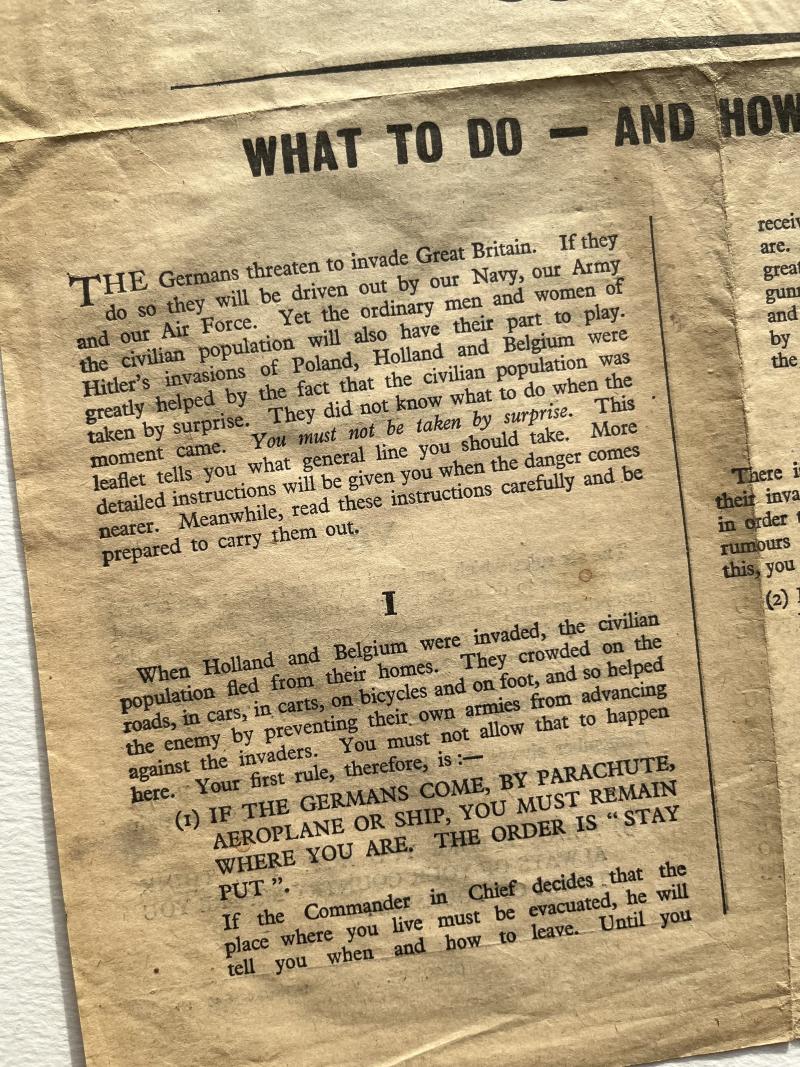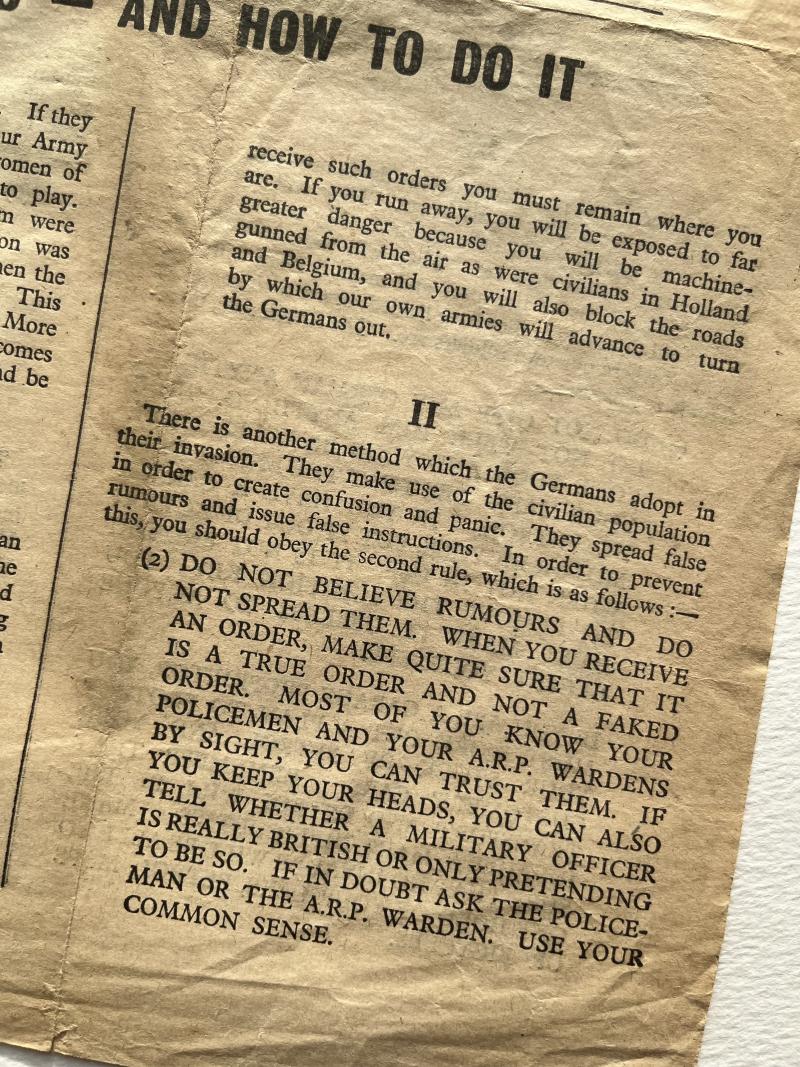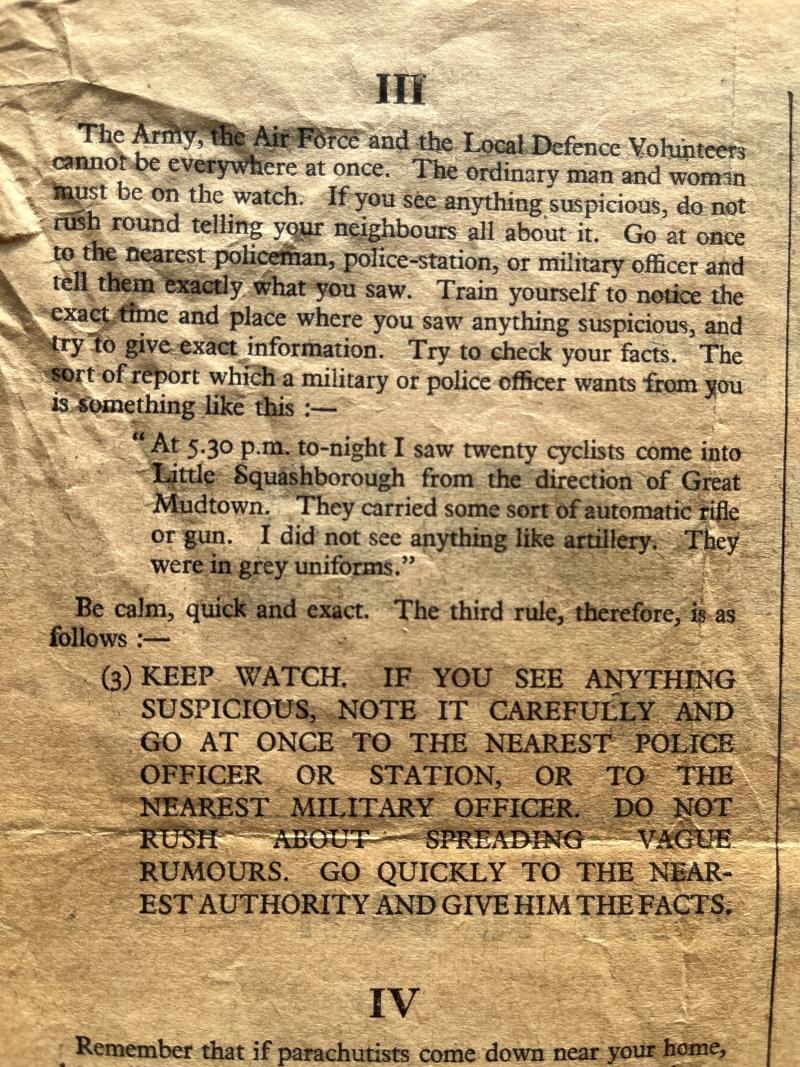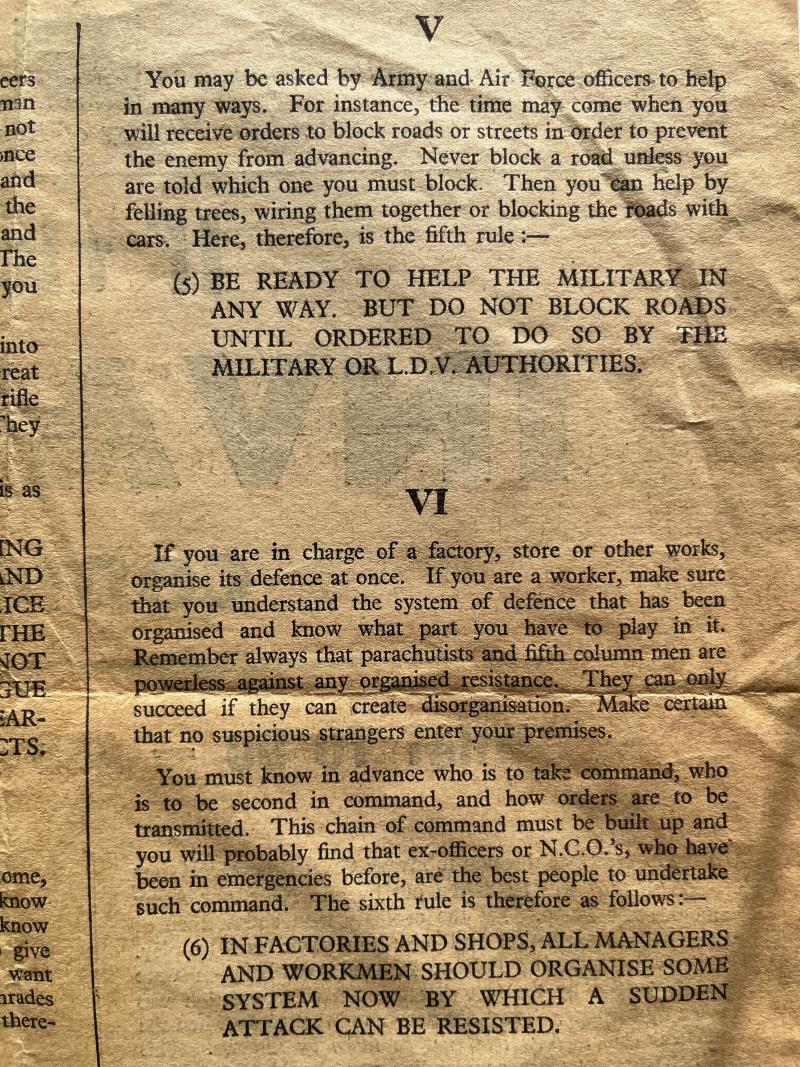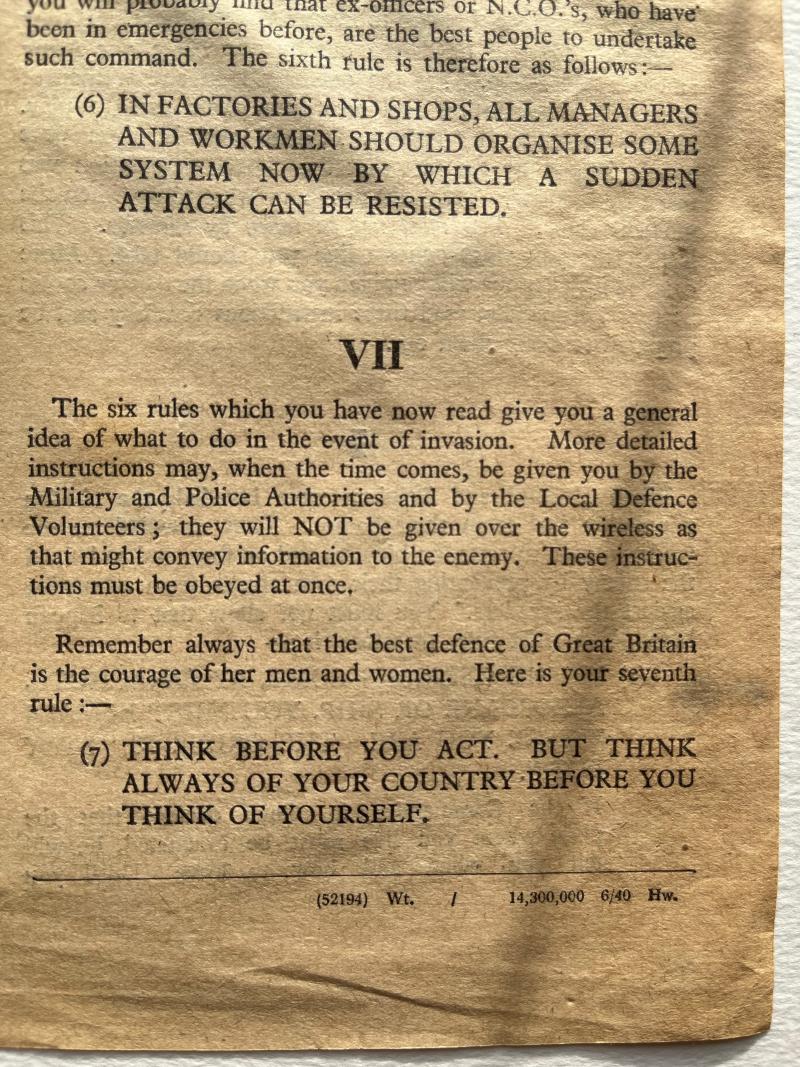WW2 British, Home Front, ‘If The Invader Comes’ Leaflet, June, 1940.
Was £21 now £15
The British government faced a terrifying prospect in the summer of 1940. Following the rapid advance of Nazi troops into Western Europe, they feared an invasion.
This threat had been secretly discussed since October 1939, but it was not until defeat in the battle for France, however, that it was treated as a serious possibility. And the situation was such that ‘the invasion of Great Britain’ was discussed at 19 War Cabinet meetings during the first three weeks of Winston Churchill’s premiership.
One of the greatest difficulties facing the government was the need to explain the situation to the public. This was the responsibility of the Ministry of Information’s ‘Emergency Planning Committee’, and it was asked to produce a leaflet of instructions explaining the steps that should be taken in the event of an invasion.
Now the story behind these instructions has been uncovered by the Institute of English Studies project ‘A Communication History of the Ministry of Information, 1939-45’. It highlights the extent of confusion which existed at the top of government at one of the most significant moments in British history.
The main difficulty was the different motives of those involved. The Home Office wanted to avoid panic by stopping ‘responsible people’ from ‘running away’. Military authorities wanted to ensure that possible battle sites were kept clear for troops and pushed for civilian evacuation. The Ministry of Information, by contrast, wanted to ‘rouse the public’ by encouraging resistance.
Officials working for the Ministry of Information hoped to do this by including instructions about ‘harassing the enemy’ and ending with the lines: ‘Be clever. Be brave’.
The final version of the leaflet was an unhappy compromise. Its tone oscillated between confident assertions that any invading force would be ‘driven out’ and dire warnings that ‘If you run away … you will be machine-gunned from the air’. Advice about making roadblocks and defending factories was retained in a shortened form. Other points were simply left out.
On 18 June 1940, some 15 million copies of the finished leaflet were printed under the title If the Invader Comes. Every household in Britain received a copy during the next three days. Poster-sized versions were sent to local councils, Winston Churchill introduced its content in his ‘Finest Hour’ speech, and the press reproduced most of its seven rules in full.
However, the Ministry of Information found that the public’s reaction was mixed. A poll commissioned by its Home Intelligence Division concluded that ‘the leaflet has not been taken seriously’. A non-official report by Mass Observation (which was employed by the Ministry) was even more critical. It called the leaflet’s tone ‘out of touch with common sense’ and suggested that the public were being treated as ‘blithering idiots’.
Britain was not invaded in the summer of 1940. But the Ministry of Information’s reputation would be tarnished by the leaflet issued under its name for years to come. This shows the difficulty of its task. The Ministry was presented as an authoritative source of information but lacked the authority to make this responsibility a success.
In clean but ‘brittle’ condition a chance to own a classic piece of Home Front ephemera, priced to reflect condition.
Code: 83


